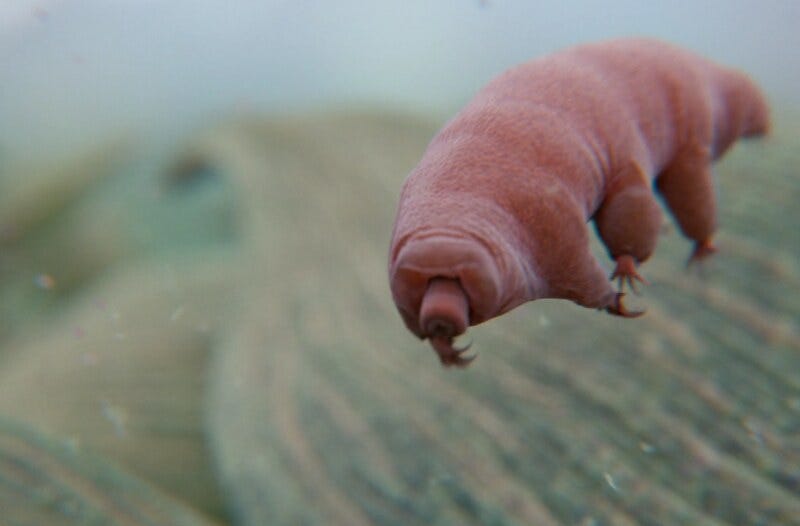Unveiling the Incredible Resilience of Tardigrades
Written on
Chapter 1: The Marvel of Tardigrades
Tardigrades, often referred to as water bears, are microscopic creatures that exhibit extraordinary resilience. Despite their diminutive size—measuring less than a millimeter—they possess remarkable abilities that allow them to endure extreme conditions.

Their resilience can be attributed to the unique proteins they express, which protect their cells from damage during dehydration. One such protein is Dsup, which forms a protective shield around their DNA. Recent computer simulations have revealed that Dsup wraps itself around the DNA it safeguards, and researchers are even investigating its potential use in astronaut genetics.
Tardigrades also possess another layer of protection: some species produce fluorescent proteins that enable them to endure levels of ultraviolet radiation that would be lethal to most organisms.
Additionally, these remarkable creatures can enter a state known as cryptobiosis, akin to a supercharged hibernation. During this state, their metabolism nearly ceases, and their body’s water content drastically reduces, allowing them to survive without food or water for decades. When conditions improve, tardigrades can rehydrate, resume normal activity, and continue their existence as if nothing happened.
Section 1.1: Understanding Dehydration Resistance
So, how do tardigrades manage to avoid cellular damage during extreme dehydration? While many organisms utilize trehalose—a disaccharide that helps mitigate stress by replacing lost water—tardigrades do not rely heavily on this molecule.
Recent research has highlighted their unique strategy. Scientists studied the resilient tardigrade species Ramazzottius varieornatus and employed trifluoroethanol (TFE) to simulate dehydration. This approach allowed the team to observe the proteins involved in the dehydration response.
Subsection 1.1.1: The Role of CAHS Proteins
They discovered over 300 proteins implicated in the dehydration process, with a significant focus on cytoplasmic-abundant heat-soluble (CAHS) proteins. Notably, these CAHS proteins exhibited minimal similarity to proteins found in non-tardigrade species. Genetic analyses indicated that CAHS proteins are exclusive to eutardigrades, one of the primary classes within the Tardigrada phylum.
The distinct capability of these proteins is their ability to transform the cytoskeleton—the cell's structural framework—into a gel-like substance during dehydration. This means that while other cells might crack under stress, tardigrade cells can bend and remain intact, exemplifying a form of resilience that would impress even Bruce Lee, who famously stated:
"Notice that the stiffest tree is most easily cracked, while the bamboo or willow survives by bending with the wind."
The stiffest cells fracture when dehydrated, while tardigrade cells morph into a gel-like state, allowing them to endure deformation.
Chapter 2: Video Insights on Tardigrade Superpowers
Explore the astonishing discoveries regarding tardigrade superpowers and their origins in this informative video.
This video reveals the secrets behind the world’s toughest creatures, showcasing the unique adaptations of tardigrades that enable their survival in extreme conditions.